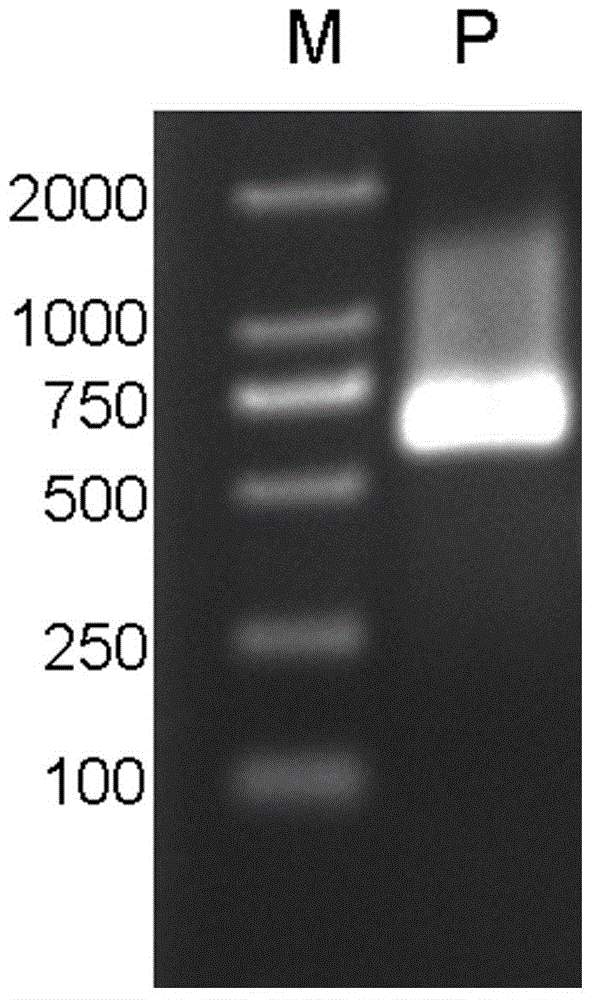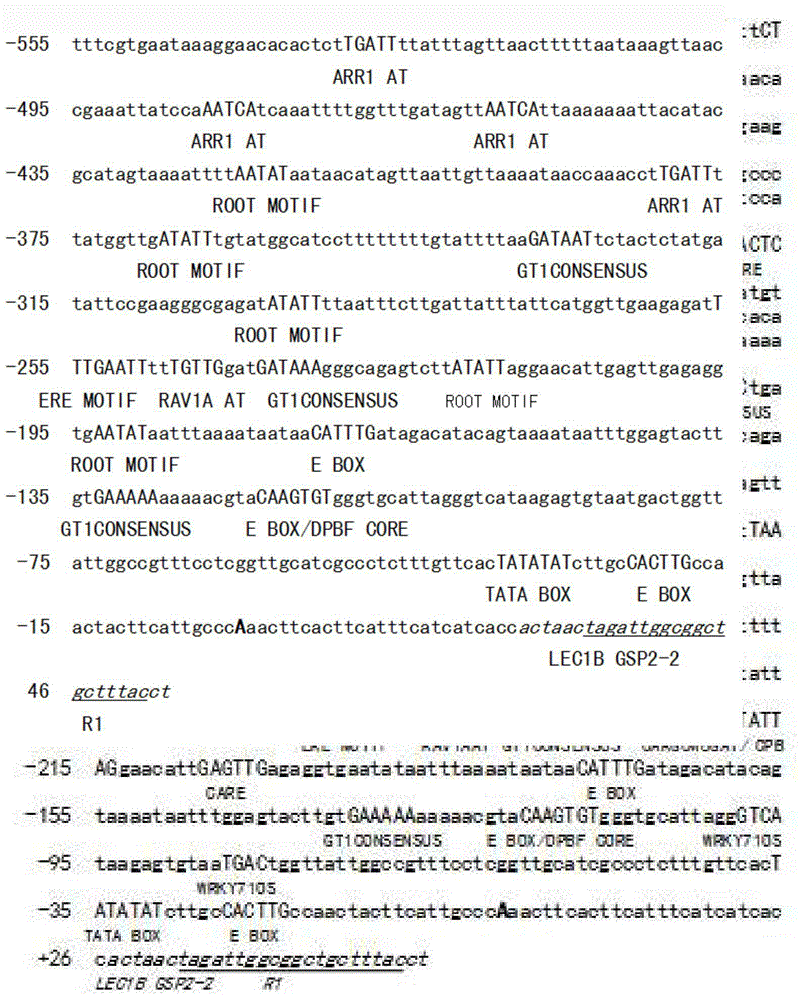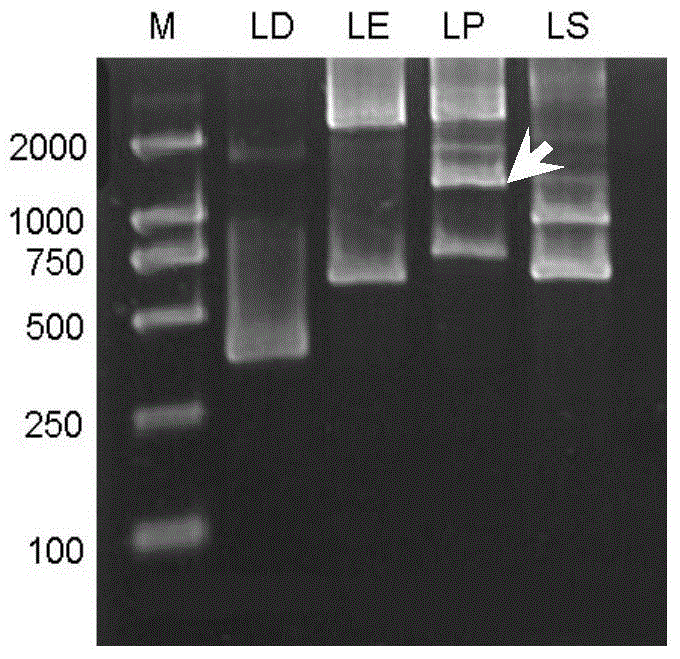Cloning and application of peanut constitutive promoter
A constitutive promoter and promoter technology, applied in the fields of molecular genetics and plant transgenics, can solve problems such as gene silencing, biological insecurity, co-suppression, etc.
- Summary
- Abstract
- Description
- Claims
- Application Information
AI Technical Summary
Problems solved by technology
Method used
Image
Examples
Embodiment 1
[0020] Example 1 Cloning of Peanut AhLEC1B Gene Promoter
[0021] 1.1 Extraction of peanut genomic DNA
[0022] Use the method provided by the plant DNA extraction kit (product of Beijing Tiangen Biochemical Technology Co., Ltd.) to extract the DNA of young peanut leaves, and dissolve it in an appropriate amount of TE (pH8.0) buffer;
[0023] 1.2 Cloning of peanut AhLEC1B gene promoter
[0024]2.5 μg of peanut genomic DNA was digested with DraI, EcoRV, PvuII, and StuI endonucleases, extracted and purified with phenol, and dissolved in 20 μl of TE (pH 7.5) buffer. Take 4 μl of digested complete DNA, connect to Adaptor according to the requirements of BD GenomeWalker Universal Kit (sequence: 5'GTAATACGACTCACTATAGGGCACGCGTGGTCGACGGCCCGGGCTGGT 3', as shown in Seq ID No:3), and construct 4 peanut genomic DNA libraries (LD, LE, LP, LS). According to the obtained genome sequence of the peanut AhLEC1B gene, two nested 3' end-specific primers LEC1BGSP2-1 (5'CCTTGTTCCCATGTAAAACCATGAA...
Embodiment 2
[0038] Construction and Transformation of Embodiment 2 Plant Expression Vector
[0039] 2.1 Fusion of peanut AhLEC1B gene promoter sequence and GUS reporter gene
[0040] Select pCAMBIA3301 as the plant expression vector, digest the cloning vector with the target fragment correctly sequenced, and recover the target fragment by electrophoresis and gel. At the same time, the expression vector was digested with restriction endonucleases HindⅢ and NcoI, and the vector fragment was recovered. The promoter fragment and the vector fragment were connected, and pCAMBIA3301-AhLEC1B promoter recombinant vectors containing promoters of different lengths were screened by plasmid restriction map identification. The specific process can refer to the attached Figure 4 :
[0041] 1. Use primers F1 and R1 with restriction sites to amplify the promoter segment of the peanut AhLEC1B gene, separate and recover the target fragment by gel electrophoresis, clone it into the pEASY-T3 vector, and s...
PUM
 Login to View More
Login to View More Abstract
Description
Claims
Application Information
 Login to View More
Login to View More - R&D
- Intellectual Property
- Life Sciences
- Materials
- Tech Scout
- Unparalleled Data Quality
- Higher Quality Content
- 60% Fewer Hallucinations
Browse by: Latest US Patents, China's latest patents, Technical Efficacy Thesaurus, Application Domain, Technology Topic, Popular Technical Reports.
© 2025 PatSnap. All rights reserved.Legal|Privacy policy|Modern Slavery Act Transparency Statement|Sitemap|About US| Contact US: help@patsnap.com



